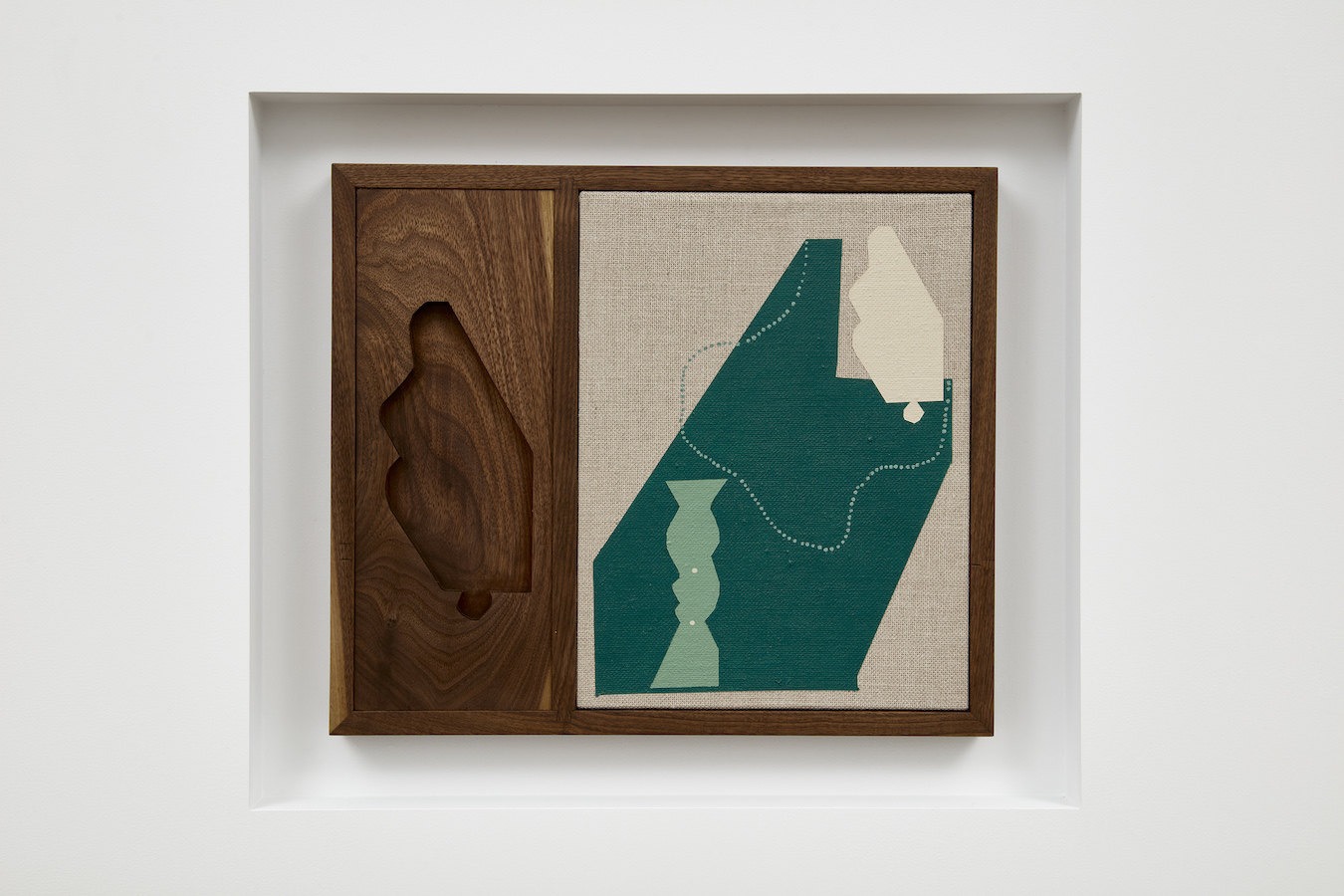Casey Kaplan

Review: Caroline Kent at Casey Kaplan
by Harmon Siegel
Artforum | February 2024
In Caroline Kent’s latest exhibition, “This Space for Correspondence,” the artist displayed her abstract paintings alongside a group of relief-like works. Built directly into the walls and colored the same shade of white, these geometric protrusions and recessed hollows unsettled her graphic compositions, prompting the viewer to oscillate between seeing her paintings as individual works of art and as embellishments of the interior space. The show thus presented a puzzle: How should these sculptural elements change the way we understand Kent’s project as a whole?
Her unstretched paintings are monumental, scaled to the high-ceilinged space of the gallery. Their vibrant colors and imposing dimensions encourage us to see them as unified, self-enclosed tableaux. Kent tends to acknowledge the canvas’s four sides, often recapitulating them in the outer edges of the shapes closest to those limits, which act as repoussoirs-bumpers to keep our wandering eyes within the painted space.
In their portrait orientation, the paintings contain a latent anthropomorphism, sometimes emphasized certain recurring shapes resemble body parts, often hands sometimes tempered by assorted patterns. To facilitate optical play, Kent striates, dapples, or mottles even her most monochromatic planes. The resulting tango between composition and facture solicits a familiar mode of beholding. One shuffles along to face the work’s center, approaches the painted surface to appreciate Kent’s technique, then steps back until the whole comes into view.
Kent’s compositional units are irregular polygons, closed figures bounded by nonintersecting sides. Some of their contours approximate curves but are in fact composed of straight segments. By evoking organic lines that break down into constituent edges, the artist aligns her works with a style of geometric-against-gestural abstraction, stressing control over chaos. To achieve this effect, she plans her paintings using paper cutouts, emulating Henri Matisse, whose presence she appears to highlight in On the dreariest of days, we find flowers in our head (all works cited, 2023). There, sprig-like forms recall the Frenchman’s 1947 collage Vegetable Elements. Kent’s designs sprout atop (literally) and within (optically) her differently colored polygons and black background. These marks coalesce the uniform surface otherwise prized apart by the perceptual separation of discrete planes. At the center right of On the dreariest of days, for instance, where a seven-sided wedge of mauve meets a Texas-shaped highlighter yellow, a fingerlike pink seems to wrap around them, as though gripping the mauve with its pinky, holding everything in place.
In such efforts to secure compositional unity, Kent defends her work against the long-standing enemy of abstract painting: wallpaper. Here, however, that formal closure jarred against the sculptural elements that the artist installed around her two-dimensional work. Recessed into the drywall like inbuilt niches or emerging from it like architectural moldings, these works prompted an awareness of the gallery space belied by the notional integrity of each canvas, questioning the virtual separation of work from wall.
Kent forces the issue in A short play about batting eyes and returning winks, which pairs a more modestly sized canvas and a panel of burnished walnut, the latter containing a baluster-like intaglio that reprises a shape in the painting. Enhancing the contrast between substances, the artist painted on Belgian linen, its prominent texture punning on two senses of “grain,” wooden and woven. The diptych nestles into the alcove of a large fiberboard polygon, as though the wall were asserting itself against the work’s autonomy.
Kent’s art invites the subjunctive “as though.” Somehow, her paintings seem to suggest that they could always be different. Looking at them, I imagined a Toy Story fantasy in which, whenever I blinked, the shapes began to dance around, then rushed back to their places before I opened my eyes. One might see the artist’s sculptural objects as pushing this imagined play beyond the canvases’ limits. Yet their material fixity, their congruence with the affectively solid wall, makes them counterweights, means of soberly acknowledging the institutional conditions of display that lock her painted figures into their present state.